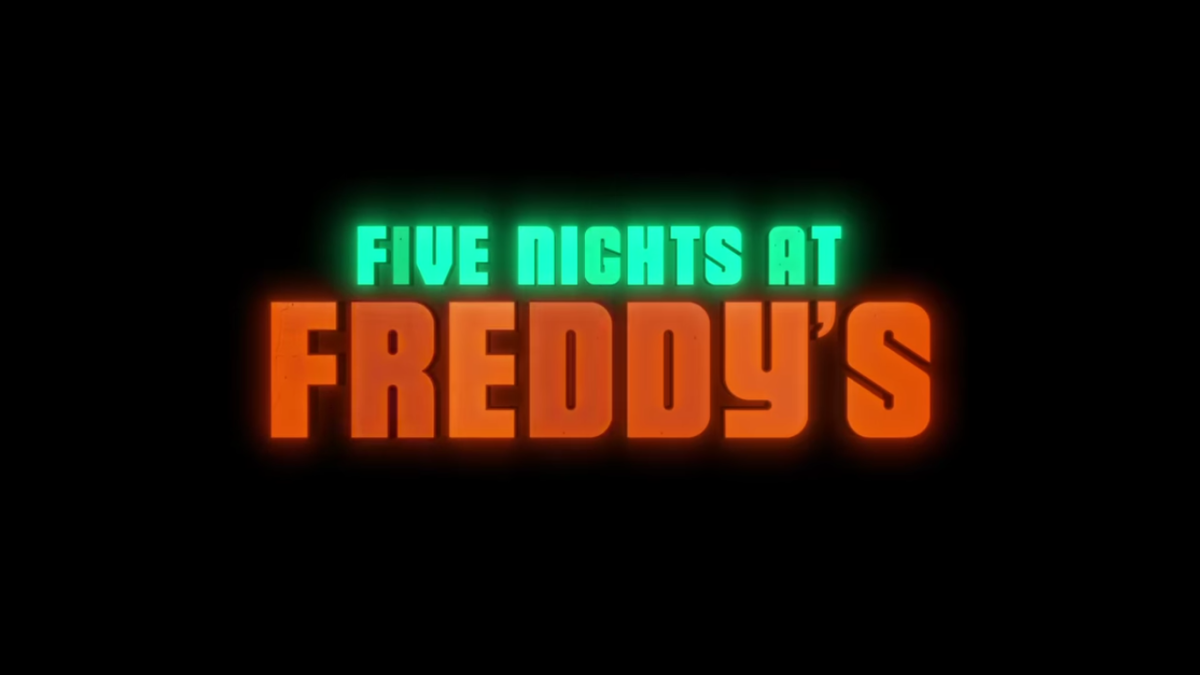For almost a decade, the “Five Nights at Freddy’s” (FNAF) video game franchise has thrived. With around twenty official games and a multitude of lore-driven theories roaming the internet, the fandom that follows the franchise is as lively as ever, especially since the release of the game-based film of the same name on Oct. 27.
Between lengthy reddit posts and hours worth of video-essays, the fan-fueled FNAF backstory has been built on in-game secrets, tricky voice-lines, and game developer Scott Cawthon’s cheeky quips. While some of it remains as just fan-fueled theories, there are other parts of the game’s detailed lore that have been seemingly confirmed in-game. So, with the extensive amount of material to work with, it’s perplexing that such a fan-favored plotline was almost completely abandoned on the big screen.
This does not mean that the movie was bad. Overall, the film adaptation was interesting, creative, and fun to watch, but it wasn’t what a fan would expect of a game-based movie co-produced by the developer.
Some argue the point that what fans know of the lore is all theory, so there is no reason to be upset over the differences in story. However, after years of build-up and Cawthon purposefully putting hints in nooks and crannies to force fans to theorize for themselves, this switch-up is so abrupt for FNAF fanatics expecting to finally see some real conclusions to the lore they hold so dearly.
There were also little irking details from the games that were muddled in the movie. Foxy’s hum was completely off–the familiar melody from the game was nowhere to be found. Instead of the traditional stuffing-springlock death combo that brings security guards to an unfortunate end, the mask of the outfit was made into what felt like a knock-off “SAW” trap. Not to mention the widespread and well known security office setup of the original game was thrown-out the window (where was the other door?).
These details were really the least concerning of the changes.
Most concerning was the issue with the Afton family. Why is Vanessa in the movie as anything more than a cameo-callback to “FNAF: Security Breach”? Since when was she at all related to the Aftons?
In the games, William Afton (co-creator of Fredbear’s Family Diner and all following establishments) has three kids: an eldest son, a younger son, and a daughter. His daughter, Elizabeth, meets her gruesome end at the hands of the animatronic known as Baby in “FNAF: Sister Location” as a young child. Yet, in the movie, Elizabeth turned into Vanessa and the childhood death became the childhood trauma she retained into adulthood through witnessing her child-killing dad in action.
The Afton family issue doesn’t stop with Vanessa either. His sons were almost completely erased from the story. Why did Michael Schmidt become a random guy struggling to care for his sister? Why was Michael’s late little brother (known as Garrett in the film) suddenly one of Afton’s earliest victims?
Afton’s sons in the games have a heavy backstory. While Michael Afton is teasing his little brother Evan Afton, he and three friends throw Evan into Fredbear’s mouth during a performance, crushing Evan’s head as the mechanisms contracted and sending him into a coma that lead to his eventual death. When Michael grows older, his guilt for Evan and resentment towards his father’s horrific hobby leads him to take the security guard position at each new establishment under various aliases.
The movie, however, erases the complexity of his character. Michael Afton is now Michael Schmidt, a suffering older brother scrambling for funds while being haunted by the memory of Garrett’s disappearance. Evan is now Garrett, a kid who was kidnapped and killed by Afton during a family trip. Neither of the brothers are related to Afton and neither grew up in the world of animatronics. Michael didn’t spend his adulthood attempting to right his father’s wrongs, and Evan didn’t die only to fall into a perpetual nightmare of his greatest fears (as seen in FNAF 4).
The removal of such key details in the FNAF storyline completely flips the years of plot-buildup on its head. The little switches like Foxy’s hum or the “SAW”-ified Freddy mask are only mildly infuriating (it doesn’t ruin the whole movie), but those paired with such drastic veers from the abundance of game story lore and secrets put together by fans ruins what could’ve been an enormous amount of fans’ childhoods come to life.



